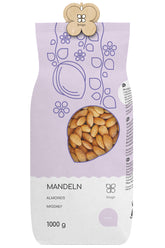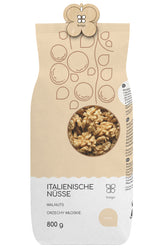Satwic Diet – what is it?
CONTENTS
- Satvic diet - main assumptions
- Ayurveda - a way to stay healthy
- Humans as natural herbivores
- Sattva - as a way of nutrition
- Rajas – as the opposite of Sattva
- Tamas means imbalance
- Examples of products included in each of the three groups
Many diets claim to help you lose weight quickly, alleviate the symptoms of certain diseases, or prevent them. The satwic diet, on the other hand, focuses primarily on our spirituality and our mind. It keeps the body healthy and is also called the yoga diet.
Satvic diet - main assumptions
The diet itself originates from India. According to local beliefs, it helps keep your mind and body healthy. It is also based on traditional Indian Ayurveda and yoga literature. The diet can be described as lacto-vegetarian. It includes whole grains, fruits, vegetables, legumes, and dairy products. Sattvic diet is defined by its philosophy and specific food distribution. There is no escaping this Indian philosophy of life and language. Foods are divided into three types: sattva, rajas, and tamas. These mean goodness, passion, and ignorance, respectively. Sattvic foods should be eaten as often as possible and treated with respect. This is the food group with the greatest impact on our health. They must be fresh, natural, and grown in harmony with nature, without the use of artificial fertilizers. They should also be GMO-free, with no preservatives or other flavor enhancers. This also applies to heat treatment. According to the rules, meals require as little human intervention as possible. Therefore, it is best to eat them raw or lightly boiled in water or steamed. In contrast, any type of food can become tamas. This term is used to describe overly processed foods that are improperly stored, especially for long periods, and fried. According to Indian philosophy, such foods disrupt the balance of body and mind.
Ayurveda - a way to stay healthy
Ayurveda is a form of traditional Indian medicine that has been practiced for almost 5,000 years. Loosely translated, this term means "knowledge of life" or "course of life." It is still practiced today in India and Sri Lanka. It addresses physical health, as well as mental and spiritual health. This type of medicine has been fully accepted by the World Health Organization. However, many scientists dispute its effectiveness. This is because it is largely based on indigenous beliefs and is closely related to local religions. Despite this, it is used in the treatment of many diseases, especially those of the digestive system. It is based on the assumption that it is not possible to fully heal the body if our mind is sick. It places great emphasis on living in harmony with nature and many alternative therapies. It is also based on maintaining the right balance between all aspects of life. For example, we can mention healthy nutrition, sleep, work, or rest. The treatment method in this system is always individualized. The most important thing for a physician is to get to know their patient thoroughly. This includes information such as the type of work performed, diet, worldly concerns, social status, and even daily habits. This type of medicine focuses not only on curing a specific disease, but on understanding its genesis and the root cause of the problem.
Humans as natural herbivores
The Satwic diet is based on the belief that humans are adapted to eating foods of plant origin. It has its origins in many Hindu books and is also the basis of Ayurveda. This is also evident in the structure of our bodies. We have not developed the long canine teeth typical of carnivores. We also have long intestines relative to our body length. This is also a characteristic that determines our adaptation to eating plant foods, because carnivores actually have a short digestive tract. The next factor is much less obvious. Herbivores, like humans, sweat through their skin. The opposite is true for carnivores. These animals usually cool their bodies by panting, licking, or other means. It also describes the method of water intake. It is also more similar to herbivorous animals than predators. Belief plays a significant role in this perception. Hindu beliefs clearly state that eating meat can create bad karma. Furthermore, there is a record that whoever we eat in one life will devour us in the next. This is one of the reasons why this diet is so unusual.
Sattva - as a way of nutrition
From this word originated the Satwic diet. In Indian philosophy, it means goodness, purity, and something positive in general. Foods from this group should make up as large a portion of our diet as possible. Following the footsteps of Ayurveda, only such a diet can give us adequate physical strength, a clear mind, health, and longevity. Furthermore, this is a diet that follows the Indian philosophy that a healthy mind determines everything that happens to our bodies. Maintaining mental clarity and psychological health is the foundation of a good life. Products in this group are characterized by their freshness and minimal processing. In addition, Sattwic foods should be as neutral as possible for us. This way, our digestive system is minimally stimulated. They should not be excessively salty, sour, spicy, or contain too much fiber. This type of diet is very characteristic of the inhabitants of India who want to lead a peaceful life in harmony with nature.
Rajas – as the opposite of Sattva
According to Hindu belief, rajas are neither good nor bad. They represent individualism, egocentrism, movement, but also dynamism. Often, this type of diet is considered overstimulating. It can also severely impair the mind and lead to selfishness, anger, or infidelity. According to ancient records, this type of diet was especially recommended for the army, high-ranking magnates, and rulers. It gave strength and increased physical performance as well as mental acuity. However, it was also supposed to make the mind less predictable and harder to control. This type of diet was rich in highly spiced and fermented foods, which were incompatible with the spirit of sattva. It included foods such as all kinds of pickles, salty, sweet, bitter, spicy, and even fried foods. Various beverages were also consumed, including coffee , tea , and vinegar. It was believed that one could live up to 100 years on such a diet.
Tamas means imbalance
Tamas, unlike the two diets mentioned above, is unacceptable. It negatively affects the body and mind. It offers no significant benefits and is for the weak. As a quality, tamas signifies imbalance, chaos, and unrest. The tamas diet was believed to emphasize negative human traits. These include, for example, laziness, lethargy, lack of motivation, and obstacles to spiritual development. According to journals, a person on such a diet will be uninteresting, boring, and uninspired. They may also be more likely to suffer from various diseases. We're talking about diabetes, obesity, kidney disease, and cardiovascular disease. In fact, this view is not divorced from reality. Such a diet included alcohol, highly processed foods, and smoking. It also included products such as meat, fish, eggs , mushrooms, and hot spices. Furthermore, this entire group was concerned with how the food was prepared. We're talking about deep-frying or improperly cooking food, which ends up burning. An interesting fact may be that even if a Sattva product expires, it is also called Tamas.
Examples of products included in each of the three groups
sattva
- Pulses (lentils, broad beans, beans, peas, chickpeas)
- Unrefined grains (wheat, barley, oats, amaranth)
- Nuts
- Seeds (sunflower, pumpkin)
- rice
- Milk and dairy products (yogurt, kefir, cottage cheese)
- Vegetables and fruits (almost all - it is important that they are fresh)
- coconut
- Water with additives
- Ser Panerr
- Locust bean gum
- Delicate spices
Rajas
- Mature cheese (cheddar, mozzarella, brie, camembert)
- butter
- Fermented fruits and vegetables
- Vegetables with intense flavor (leek, garlic, onion, radish, olives)
- Citrus fruits
- Intensely flavored spices and additives (salt, vinegar, chili, curry, ginger)
- Sugar
- Coffee and tea
- Chocolate products
- Fried food
Tamas
- alcohol
- Meat
- Fish and seafood
- Mushrooms
- eggs
- Leftover food
- Expired food
- Insufficiently cooked food (burnt, undercooked, fried, grilled)
Summary
The Satwic diet is certainly a very interesting one, especially when it comes to its genesis. It's impossible to understand it without delving into the reality of its origins, as well as its purpose. Despite this complicated envelope, we cannot deny its effectiveness. In fact, it is a very healthy diet that covers almost 100 percent of the needs for macro- and microelements. However, keep in mind that due to the absence of meat, vitamin B12 supplementation should be considered.
THE PUBLISHER'S CHOICE
Almonds 1 kg BIOGO
- £11.00
£13.00- £11.00
- Unit price
- / per
Walnuts 800 g BIOGO
- £8.00
£10.00- £8.00
- Unit price
- / per
Dried organic mango 400 g BIOGO
- £10.00
- £10.00
- Unit price
- / per
Dried White Mulberries 500 g ORGANIC
- £6.00
£7.00- £6.00
- Unit price
- / per
Dried organic figs 800 g BIOGO
- £27.00
- £27.00
- Unit price
- / per
Unpeeled buckwheat groats 1 kg BIOGO
- £3.00
£3.00- £3.00
- Unit price
- / per
Organic coconut flakes 500 g BIOGO
- £9.00
- £9.00
- Unit price
- / per
Organic oat flakes 600 g BIOGO
- £4.00
- £4.00
- Unit price
- / per
Organic cashew nuts 1 kg BIOGO
- £18.00
- £18.00
- Unit price
- / per
Milk thistle seeds 1 kg BIOGO
- £4.00
- £4.00
- Unit price
- / per









































































































































